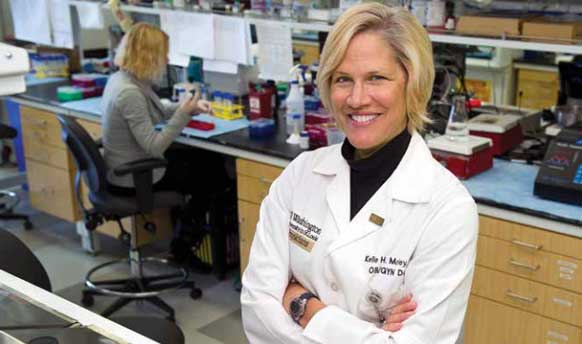Improving Pregnancy-Related Health Outcomes
April 11, 2013

The Women and Infants Health Specimen Consortium is funded in part by the Children’s Discovery Institute, a world-class research partnership between St. Louis Children’s Hospital and Washington University School of Medicine that funds the work of scientists and clinicians investigating some of the most devastating childhood diseases and disorders.
In spring 2013 the institute profiled WIHSC in its Pathways newsletter:
Three years ago, the Children’s Discovery Institute launched a one-of-a-kind initiative called the Women and Infants’ Health Specimen Consortium (WIHSC). Its aim is to track long-term, pregnancy-related health outcomes of women and their infants by collecting, processing and storing clinical samples taken from women before and during pregnancy, as well as samples from infants after delivery.
The article quotes WIHSC cofounder Dr. Kelle Moley explaining a defining characteristic that has made WIHSC distinct from the beginning:
“The WIHSC is the only large tissue and biomedical information database in the United States that collects samples from women at different time points—during conception, throughout pregnancy and beyond…. This consortium enables studies that probably weren’t possible before because we didn’t have access to these samples.”
Noting that funding agencies including the National Institutes of Health don’t support infrastructure projects, Dr. Moley further pointed out that the Children’s Discovery Institute grant is essential to the research that the consortium makes possible:
“Gestation is such an important period in a child’s development, yet it is often difficult to study across a nine-month period. We hope this consortium will provide the tissue and material needed to answer the most important questions in obstetrics, gynecology and early pediatric health.”
Read the full article in Pathways.
